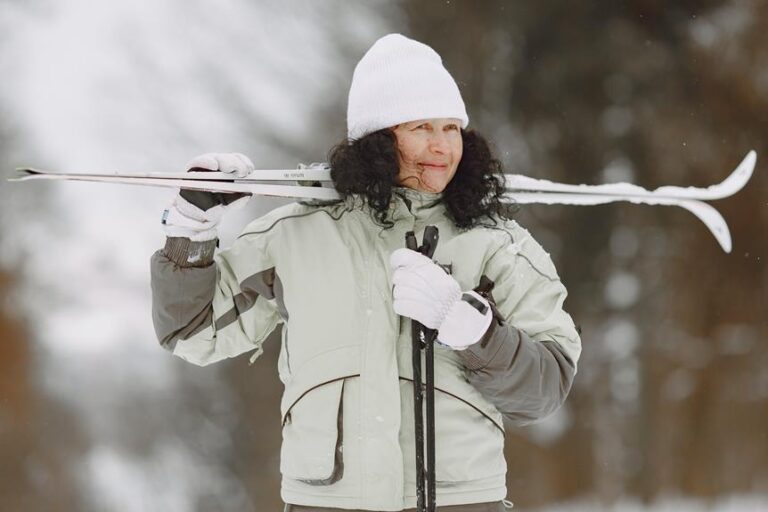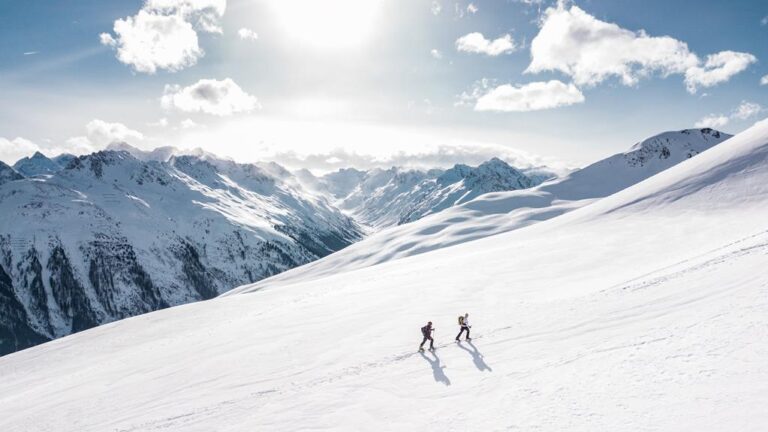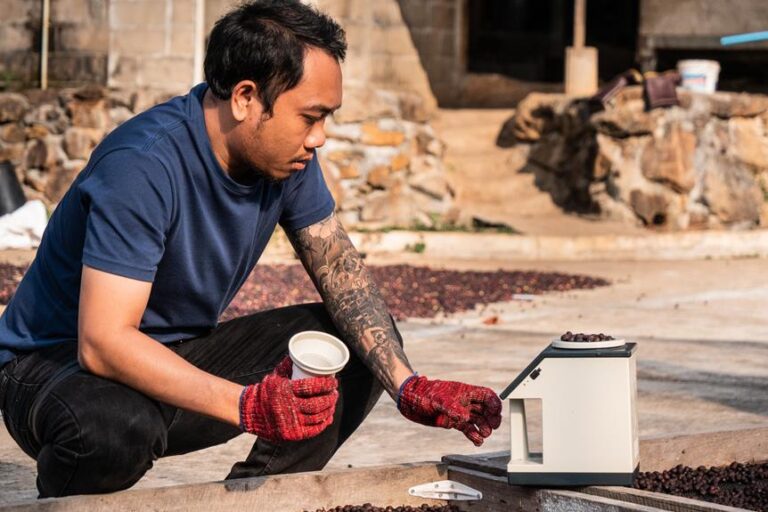What Shoes to Wear Skiing – Must Read Insights!
So, you're planning a skiing trip and you're wondering, 'What shoes should I wear?' Well, let's just say that strapping on a pair of high heels or flip flops might not be the best idea.
While it may seem obvious, choosing the right shoes for skiing is an essential part of your overall experience on the slopes.
But fear not, dear reader, because in this discussion, we're going to explore the world of ski boots and help you find the perfect fit for your feet. Trust us, this is one discussion you won't want to miss.
Ski Boots for Different Skiing Styles
Choose the perfect ski boots tailored to your skiing style and experience the ultimate comfort and performance on the slopes. When it comes to skiing, having the right equipment is essential, and ski boots are no exception. Different skiing styles require specific ski boots designed to enhance your performance and keep you comfortable throughout your ski trip. Whether you're hitting the slopes at a resort or exploring backcountry terrain, finding the right ski boots can make all the difference.
Freestyle skiers, who enjoy tricks and maneuverability, may prefer softer flex boots. These boots provide the flexibility needed for jumps and tricks while still offering support and control. On the other hand, alpine skiers who crave speed and precision may opt for stiffer flex boots. These boots offer maximum control and stability at high speeds. Freeride skiers, who enjoy a mix of different terrains and skiing techniques, may look for a balance between flexibility and support in their ski boots.
To ensure you find the perfect ski boots for your skiing style, consider consulting with a professional boot fitter. They can assess your skiing style and foot shape to recommend the best boots for you. Remember, choosing the right ski boots is just as important as selecting the right ski gear, ski jackets, and other equipment.
Choosing the Right Ski Boot Size
Finding the perfect fit for your ski boots is crucial for comfort and performance on the slopes. When it comes to ski boots, you want them to snugly hold your foot without causing any pain or pressure points. To ensure you find the right size, consider getting your foot professionally measured for width, length, and arch height. This will help you determine the correct size that will provide the best fit for your feet. Remember that different brands and models may have varying fit, so trying on different options is essential for finding the perfect size.
When trying on ski boots, make sure there's no space at the heel, as this can cause your foot to move around inside the boot while skiing. Additionally, when standing, your toes should lightly touch the front of the boot. This provides a proper fit that prevents foot movement, allowing you to properly ski without discomfort.
Having the right ski boot size is also important for keeping your feet warm and dry in cold weather. When you're on a ski holiday at a ski resort, it's crucial to have the proper ski or snowboard boots that fit well. This, along with other gear like a waterproof jacket and base layers, will help keep your feet dry and warm throughout your skiing adventures.
Benefits of Renting Ski Boots
Renting ski boots offers several advantages, making it a convenient and cost-effective option for skiers of all levels. When hitting the slopes, you want to ensure that you have the right gear to keep you comfortable and performing at your best. While you may have your own ski jacket, ski socks, ski pants, ski gloves, and shell pants, renting ski boots can provide additional benefits.
One of the main advantages of renting ski boots is the ability to customize and find the best fit for your specific foot shape. This ensures not only comfort but also optimal performance on the slopes. Rental shops offer professional fitting services, helping you find the right alignment, support, and functionality for your ski boots. This is especially important for activities like ski touring or resort skiing, where you need precise control and stability.
Another major benefit of renting ski boots is the access to the latest models and technologies without the commitment of purchasing. By trying different styles and features, you can find the boots that suit your skiing style and preferences. This allows you to experiment and adjust according to your needs.
Renting ski boots also eliminates the need for transporting bulky boots, making travel logistics easier and reducing baggage weight. This is particularly advantageous if you're flying to a ski destination or have limited storage space in your vehicle.
How to Properly Fit Your Ski Boots
When fitting your ski boots, ensuring a proper fit is crucial for comfort and optimal performance, building upon the benefits of renting ski boots. To help you achieve the perfect fit, follow these guidelines:
- Try them on at the right time: Try your boots on in the afternoon when your feet are at their largest due to natural swelling. This ensures that your boots will fit snugly without feeling too tight when you hit the slopes.
- Check toe clearance: When standing straight, your toes should lightly brush the front of the boot. When flexing forward, they should pull away slightly. This prevents discomfort and ensures proper circulation.
- Secure your heel: Your heel should be firmly seated in the boot's heel pocket without lifting when flexing forward. This provides stability and control on the slopes.
- Adjustability is key: Ensure that the boot's buckles or straps are easily adjustable to secure your feet and ankles. This provides essential support and prevents any unwanted movement.
To further enhance your skiing experience, remember to keep your hands warm with gloves or mittens, especially in cold temperatures. Applying lip balm is also a good idea to protect your lips from the harsh elements. Additionally, layering your clothing with synthetic materials will keep you warm and dry throughout the long day on the slopes.
These tips are especially helpful if you're skiing for the first time. Seek professional assistance or a boot fitting specialist for personalized guidance and adjustments to ensure a perfect fit.
Maintaining and Caring for Your Ski Boots
Are you wondering how to properly maintain and care for your ski boots to ensure their longevity and performance? Taking care of your ski boots is crucial to ensure a great skiing experience every time you hit the slopes.
Here are some tips to help you keep your ski boots in top shape:
- Store your ski boots in a cool, dry place: This will prevent mold and mildew from forming, ensuring that your boots stay fresh and odor-free.
- Dry your ski boots thoroughly after each use: Moisture can lead to unpleasant odors and bacteria buildup. Give your boots enough time to dry completely before storing them.
- Check and maintain the buckles, straps, and closures: Proper functionality of these components is essential for a secure and comfortable fit. Regularly inspect and tighten or replace any damaged parts.
- Inspect the soles and traction: The soles of your ski boots provide grip on the snow, so it's important to ensure they're in good condition. Replace worn-out soles to maintain optimal performance.
- Consider professional servicing and fitting: A professional can help ensure that your ski boots are properly fitted, providing you with the best possible comfort and performance on the slopes.
Frequently Asked Questions
What Footwear Do You Wear Skiing?
When skiing, it's important to wear ski-specific boots. Look for brands like Salomon or Rossignol. Make sure they fit well and consider insulated boots for warmth. Renting can be convenient, but proper fit is key.
What Do You Wear on Your Feet in a Ski Resort?
When you're at a ski resort, it's important to wear the right footwear. The best ski boots for beginners provide control and comfort. Choosing the right ski socks can prevent blisters. Consider the benefits of wearing heated ski boots for warmth. Properly fitting ski boots with ankle support are essential.
What Shoes to Pack for a Ski Trip?
For skiing, bring the best boots for warmth and waterproofing. Pack stylish shoes for après ski activities and comfortable ones for walking around the resort. Slip-on shoes are convenient. Look for insulated, lightweight, trendy, and affordable options.
What Should I Wear on My Feet When Not Skiing?
When not skiing, make sure you have the best après ski footwear options. Choose comfortable footwear for walking around the ski village and stylish shoes for resort evenings. Don't forget warm slippers for relaxing in the lodge.
Conclusion
So, when it comes to choosing the right shoes for skiing, remember to prioritize comfort, support, and performance.
Consider your skiing ability and style, and try on several pairs of boots to ensure the best fit.
Getting fitted by a professional is important for optimal performance on the slopes.
And don't forget to properly maintain and care for your ski boots to prolong their lifespan.
Happy skiing!






